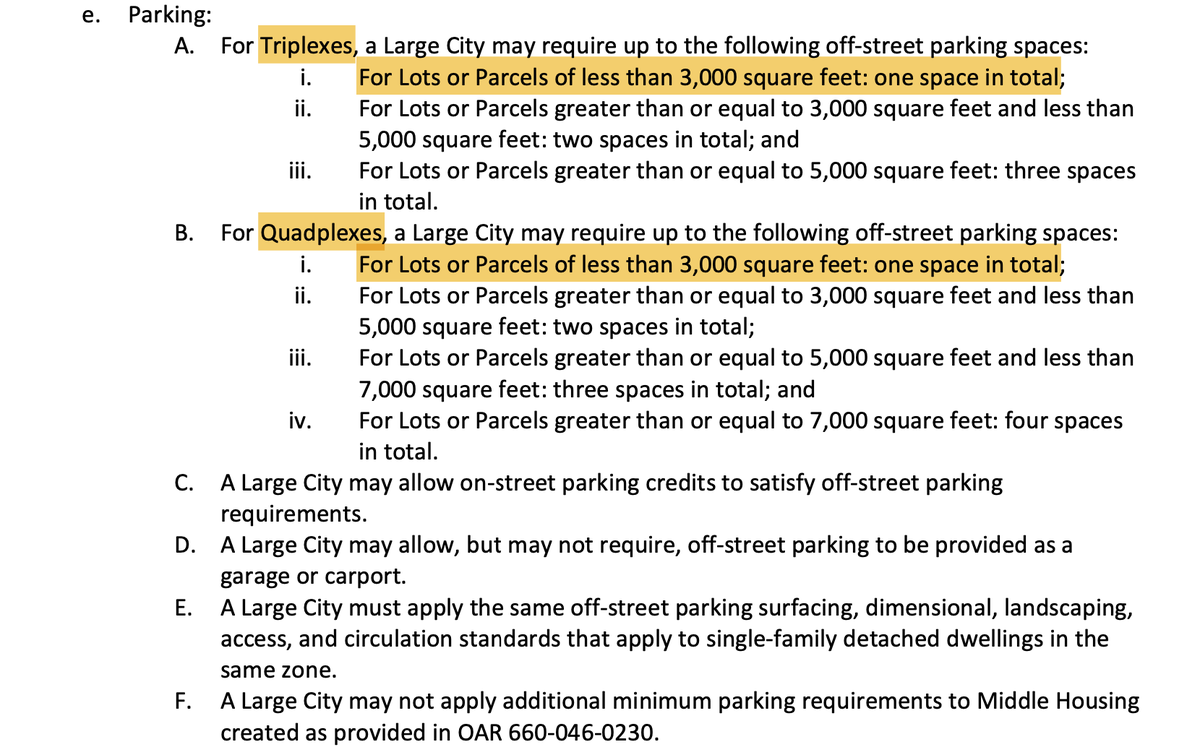
THREAD: A Tale of Two States
(and executive branch preemption of municipal barriers to infill housing, like parking minimums)
1/n
(and executive branch preemption of municipal barriers to infill housing, like parking minimums)
1/n
Oregon's LCDC just crushed minimum parking requirements for small infill projects (duplex, triplex, 4plex). @California_HCD has not done same. Why not?
2/n
2/n

Statutory authority is pretty similar. Oregon: cities may not impose "unreasonable costs or delay" on development of "middle housing." CA: cities' housing plans must "remove constraints" to "housing for all income levels" "where appropriate & legally possible"
3/n

3/n


@California_HCD has issued weak guidelines about parking as a potential constraint, but nothing like Oregon's new regs.
hcd.ca.gov/community-deve…
4/n

hcd.ca.gov/community-deve…
4/n


I read lots of CA housing plans & agency correspondence, found no evidence of state effort to crack down on parking minimums or other constraints, papers.ssrn.com/sol3/papers.cf…. New state auditor report also finds HCD has failed to control constraints, auditor.ca.gov/reports/2020-1….
5/n
5/n
Why is Oregon doing better? My best guess: LCDC has rulemaking authority, HCD for the most part does not. Plus, CA (inanely) requires nonbinding agency guidance that makes policy to go through very cumbersome rulemaking process. papers.ssrn.com/sol3/papers.cf…
6/n
6/n
So it's legally tough for HCD to tell cities ex ante what it expects to see in terms of constraint removal. But w/o setting clear expectations up front, it's politically tough for HCD to reject a city's housing plan b/c it doesn't do enough to remove constraints.
7/end
7/end
• • •
Missing some Tweet in this thread? You can try to
force a refresh





